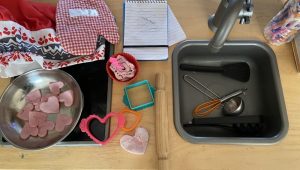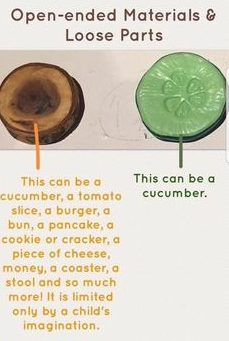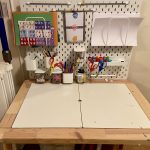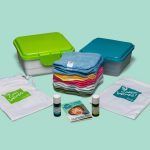Self Isolation Activity Ideas for Children (and their adults)
Play dough
This has to be a big favourite with all children and so easy to make. Playdough is great for hand strengthening (Important for writing. When hands become weak it becomes harder to control pens/pencils and write)
Add Essential oils such as lavender when making the playdough or add a herb plant to the playdough area to add a more sensory experience.
Playdough Recipe
2 cups plain flour
1/2 cup salt
1 Tablespoon cream of tartar
Mix all dry ingredients and make a well in the middle.
Add
2 Tablespoon of oil (sunflower,veg etc)
Food colouring (optional. Add to the water if using)
1 to 1 ½ cups boiling water. Mix well. Add just 1 cup of water to begin with and add more until you get the consistency you would like. The playdough will dry out slightly as it cools so you don’t want it too dry to begin with.
Take photos using camera/tablet of your creations to add some information technology learning.
Salt trays
Exactly what it says. A tray with salt in. Use fingers, paint brushes, sticks etc to draw or write. Great for reception children when practicing their letters.
Shaving foam
A bit like the salt tray. Add to a tray for easy, fun mark making. Add some drops of paint or food colouring and make patterns using a stick or end of a paint brush.
Simple paper, pens, pencils, scissors, glue etc
Let the children use it how they choose. Have it freely accessible so they can choose when and what to create or write. Cutting again will help strengthen hands.
Fortune Teller
https://youtu.be/BxyXk1sr2io
Junk modelling
Start saving empty boxes, yoghurt pots, milk carton lids, loo roll tubes etc and let the children use their imaginations to make some creations.
Painting
Who doesn’t love painting? Get some daffodils from the garden or shops and place in a bottle/vase and leave at the table with some paper and paints for the children to choose when ready. Talk about spring.
Twinkle
I’m not a fan of work sheets but I know they are used a lot in schools and some children do enjoy them. Twinkl are offering a temporary free subscription to help support home learning. Some great ideas on here using code PARENTSTWINKLHELPS
https://www.twinkl.co.uk/offer
Muddy puddle teacher
Muddy puddle teacher are also offering a temporary free subscription to help with home learning. Some great ideas here too
https://themuddypuddleteacher.co.uk/muddy-subscriptions/
Reading Eggs and Mathseeds.
This is probably one of my favourite online learning tools and they are currently offering a free 30 day trial. It has an app too. Great for ages 3+
https://readingeggs.co.uk/signup
Play
Children of all ages learn a lot through play and we shouldn’t forget this.
Allow time for your child(ren) to play inside and in the garden allowing them to use their imagination.
Build a den together, read some books, create your own stories, build a train track, create a fairy / dinosaur garden with what ever you can find (mud/soil/sand/stones/plant pots/branches), build with Lego/duplo. Measure creations with a tape measure to add some maths learning or plan a creation on paper to then create using Lego.
Role play café, shops, using empty food boxes or play dough. Create menus using pictures from the internet to cut and stick or draw your own.
Paper aeroplanes
Make paper aeroplanes. Who’s can fly furthest? Measure with the tape measure.
Make and write your own book
Make a book again using pictures from the internet to cut and stick or even print some family photos to use and create a story about you. Adults can scribe (write what the child says) for the child or children can write themselves.
Pictionary
A great family favourite. If you have an easel, use it, not only will it save paper, it helps core muscle strength as children reach up to use it. Taller children can kneel to get the same effect. Use the internet to generate the items to draw (IT learning, retrieving information).
YouTube drawing tutorial
It’s inevitable that children are going to want to use technology whilst not at school, so why not let them? My school aged children love using YouTube drawing tutorials for drawing. They have created some amazing drawings doing this during the holidays. Great for pencil control and strengthening hand muscles.
Make your own tuck shop
I’ve pinched this idea from a parent so I can’t take credit for this one, but a great idea for Pre School / School aged children.
Let the children design/create a little shop area using a table or even a box. Create signs using paper and pens. Don’t forget to make a price list. You can either use real money, toy money or make your own. The children earn money throughout the day for doing jobs, school work etc and then they get to spend their money at the tuck shop.
Link to my facebook page for photos and more ideas
https://www.facebook.com/pg/Laura-Clark-Registered-Childminder-115024908616090/photos/?tab=album&album_id=556907527761157
Pre-School Inspirations
Some great ideas on this Facebook page for pre-school and school aged children
https://www.facebook.com/1380364932188270/posts/2606270389597712/?d=n&substory_index=0
Stay safe
https://www.nhs.uk/conditions/coronavirus-covid-19/




